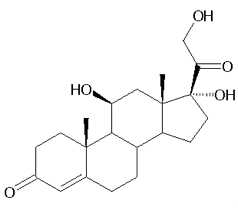Cortisol
Term
 Cortisol
Cortisol
Source | Glossary of Most Commonly Used Biomedical Terms and Concepts | Lithuanian University of Health Sciences | Academician Professor Antanas Praškevičius, Professor Laima Ivanovienė
The fibrous area of the adrenal cortex synthesizes glucocorticoids from cholesterol. Cells secrete it into the blood, with the majority of the hormone (75–80%) binding to the corticosteroid-binding protein transcortin, and about 15% binding to albumin. Free and biologically active plasma cortisol accounts for 5–10%. It crosses the plasma membrane and, by binding to intracellular glucocorticoid receptors, triggers a biological response. Its half-life is 1.5 hours. The hormone targets liver, kidney, and muscle cells of the adrenal cortex, as well as lymphatic, adipose, and bone tissues. Cortisol promotes protein catabolism and amino acid accumulation from non-hepatic (extrahepatic) tissues, with free amino acids used for gluconeogenesis in the liver. Cortisol activates fatty acid oxidation in adipose tissue. An abnormally high level of glucose and acetone substances in the blood can lead to steroid diabetes. Cortisol suppresses osteocalcin gene expression in osteoblasts, vitamin D synthesis, and calcium ion reabsorption in the small intestine, promoting osteoporosis.
 Cortisol
Cortisol
Source | Glossary of Most Commonly Used Biomedical Terms and Concepts | Lithuanian University of Health Sciences | Academician Professor Antanas Praškevičius, Professor Laima Ivanovienė
© hi5health 2024. All rights reserved | Privacy Policy